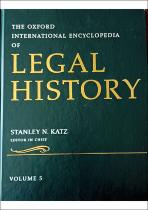| dc.contributor.author | Moosa, Najma | |
| dc.date.accessioned | 2022-10-05T09:01:10Z | |
| dc.date.available | 2022-10-05T09:01:10Z | |
| dc.date.issued | 2009 | |
| dc.identifier.citation | Moosa, N. (2009) "South Africa: Indian Law” in Katz, Stanley N (ed). The Oxford International Encyclopedia of Legal History Vol 5 New York: Oxford University Press 5: 283-84. | en_US |
| dc.identifier.isbn | 9780195134056 | |
| dc.identifier.uri | http://hdl.handle.net/10566/8013 | |
| dc.description.abstract | The South African legal system comprises common law (Roman-Dutch and English law developed through case law) legislation and (mainly African) customary law with elements of Muslim, Hindu, Jewish and Zoroastrian (Parsi) law. Dutch occupation (1652) was followed by two British occupations (1795 and 1806) separated by a short Batavian (Dutch) rule in 1803. British occupation ended in 1910 when the four territories of the Cape, Natal, Free State and Transvaal formed a union. In 1931 South Africa became independent within the Commonwealth; it became a Republic in 1961. | en_US |
| dc.language.iso | en | en_US |
| dc.publisher | Oxford University Press | en_US |
| dc.relation.ispartofseries | The Oxford International Encyclopedia of Legal History;5 | |
| dc.subject | South Africa | en_US |
| dc.subject | Indian Law | en_US |
| dc.subject | Common Law | en_US |
| dc.subject | British Occupation | en_US |
| dc.subject | Cape Malay | en_US |
| dc.title | South Africa: Indian Law | en_US |
| dc.type | Book chapter | en_US |

